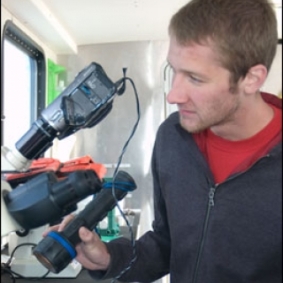Eight students will be presenting the summer work at the Ocean Sciences Meeting in March 2022!
Jordan Hill, Princeton University
Class Year:
2009Mentor:
Victoria Coles, Ph.D.Project Title:
Quantifying Nutrient Inputs to Chesapeake Bay: What are the Appropriate Sampling Intervals for Estimating Mean Nutrient Concentrations?
Abstract:
Excessive nutrient input is a known cause to the poor health quality of the Chesapeake Bay. Variability in the nutrient concentration signal, at frequencies as high as the semi-diurnal tidal signal, falls through the gaps of the bi-weekly to monthly sampling record that currently exists. We found that collecting samples less frequently than every three days is not enough to consistently estimate the true nutrient concentration mean of a seasonal period within plus or minus 20% error. Because each nutrient has natural frequencies and reacts differently to rainfall events, sampling biases such as sampling during the day, or not sampling on days of rainfall events, skew the reported nutrient concentrations. In terms of sampling techniques, not sampling at exact intervals increases the confidence that the datas mean falls within a 20% error range because the samples are less likely to hit on the resonant frequencies of the time series. We have also shown that bi-weekly to monthly samples taken over a long period of time (~50 years) are unlikely to confidently recognize a 40% decrease in nutrient inputs to the Chesapeake Bay.
Location:
Horn Point LaboratoryPresentations:
Hill, J.*, and V. Coles. 2010. Quantifying nutrient inputs to Chesapeake Bay: What are the appropriate sampling intervals for estimating mean nutrient concentrations? . Ocean Sciences Meeting, Portland, Oregon .




